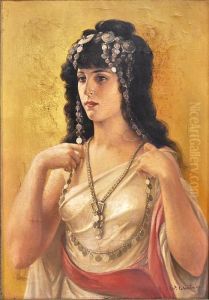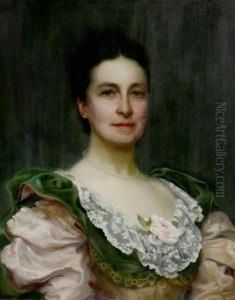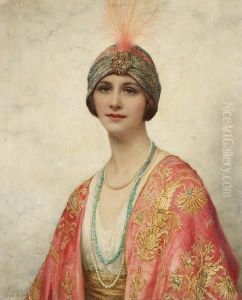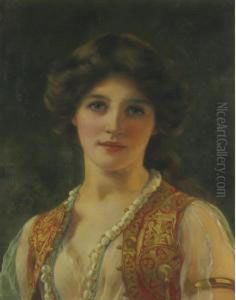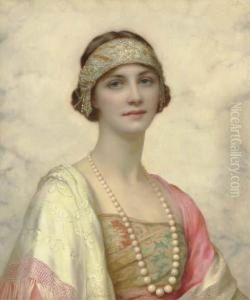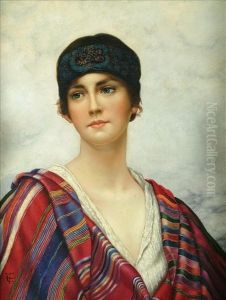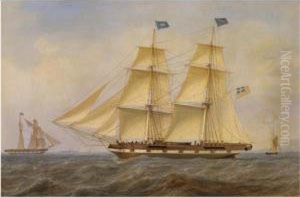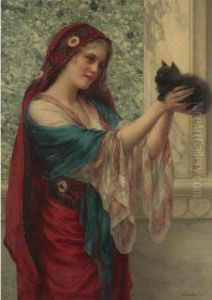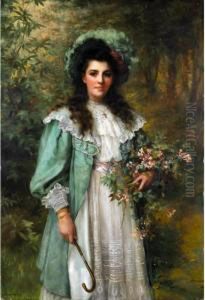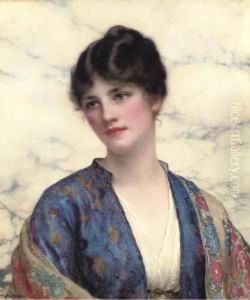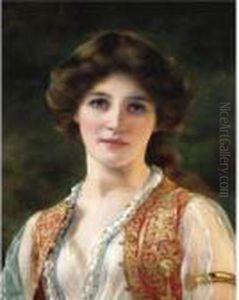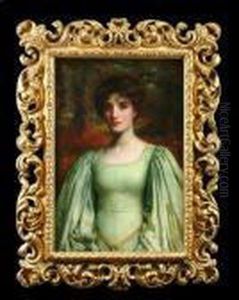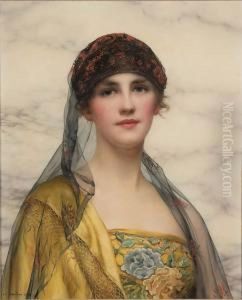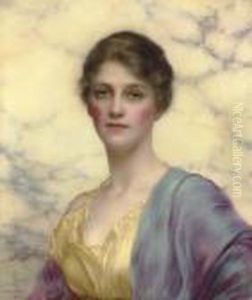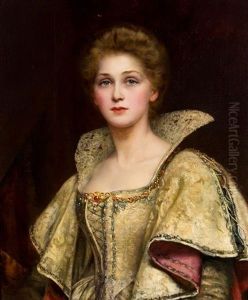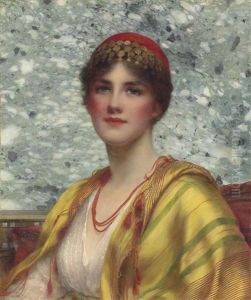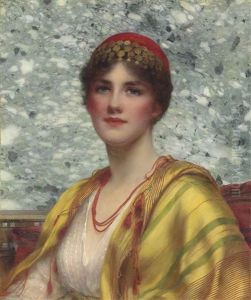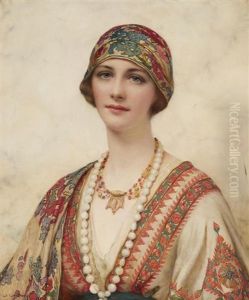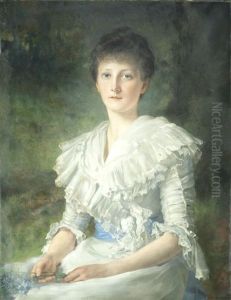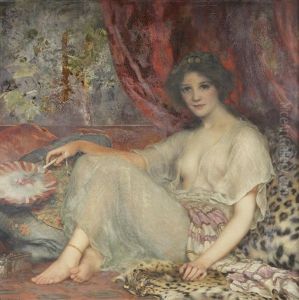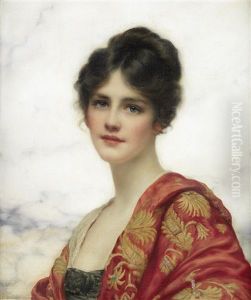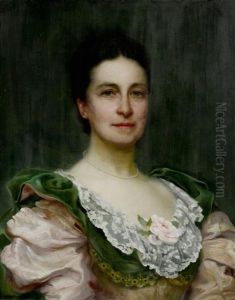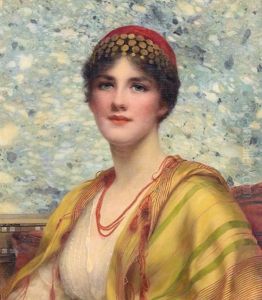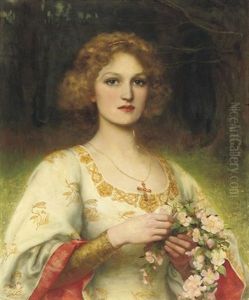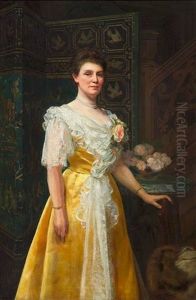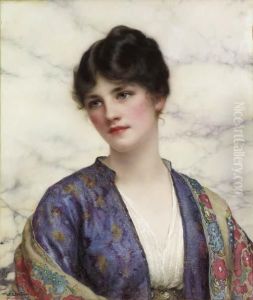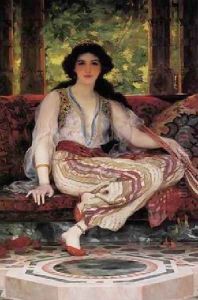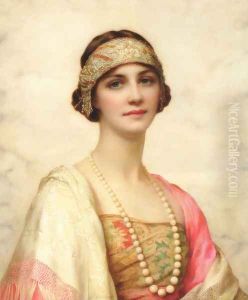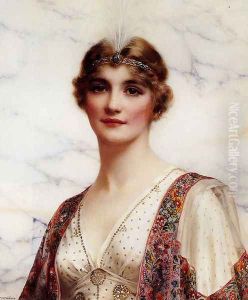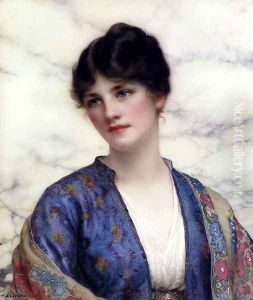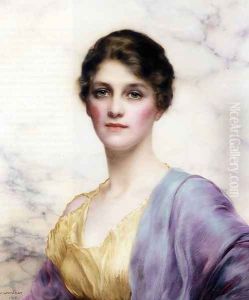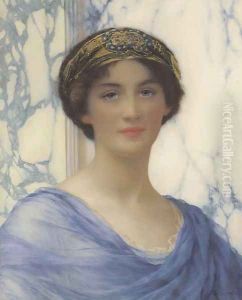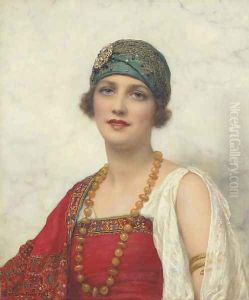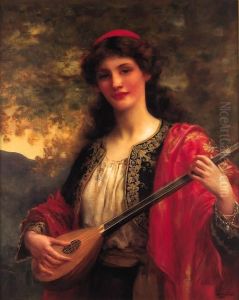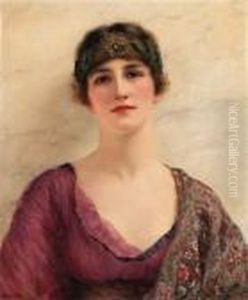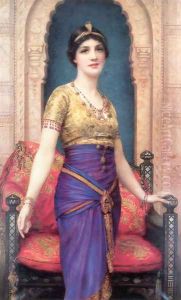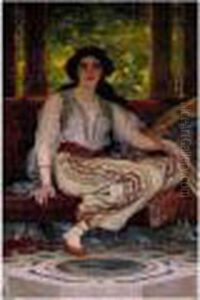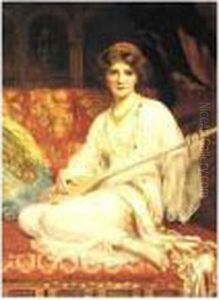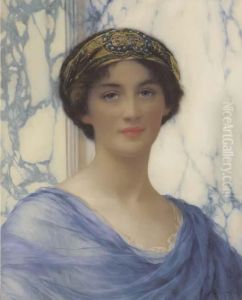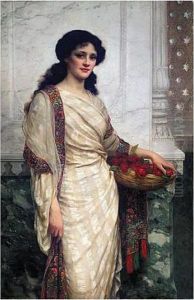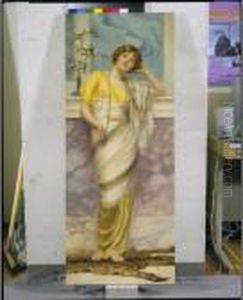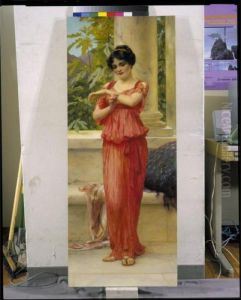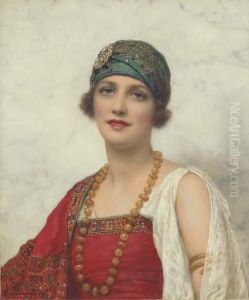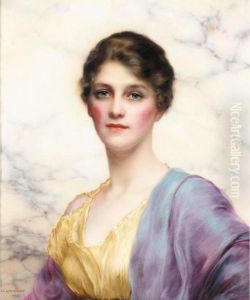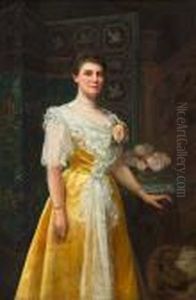William Clarke Wontner Paintings
William Clarke Wontner was an English painter specialized in portraits in the classical style. Born on January 21, 1857, in Stockwell, London, Wontner began his career during the Victorian era, and his work was influenced by the Academicism of the late 19th century, though he remained somewhat detached from the artistic movements of his time.
Wontner received his artistic training at the South Kensington Art Schools, which later became the Royal College of Art. His father was a well-known architect, which contributed to Wontner's appreciation for precise and elegant lines, a characteristic that can be seen in his paintings. His works often depicted women in luxurious settings, characterized by their grace and serenity. He was particularly adept at capturing the textures of fabrics and the softness of skin, demonstrating a meticulous attention to detail.
His style was similar to that of Sir Lawrence Alma-Tadema and John William Godward, and he was associated with the Neo-Classicism movement that sought to revive the styles and subjects of ancient Greco-Roman art. Despite this, Wontner did not receive the same level of fame as some of his contemporaries. However, he enjoyed a certain degree of success and exhibited at institutions such as the Royal Academy and the Society of British Artists.
Throughout his career, Wontner remained focused on portraiture, although he also painted a few Orientalist subjects. His portraits were typically set against a backdrop of mosaics, marble, and intricate architectural elements, which added a timeless and stately quality to his work.
William Clarke Wontner lived through the transitions from the Victorian to the Edwardian era and into the early 20th century, where the art world saw dramatic changes with the emergence of modernism. Despite these shifts, he maintained his classical approach until his death on September 23, 1930. Today, Wontner's works are held in private collections and occasionally appear in auctions, appreciated for their beauty and historical value.
